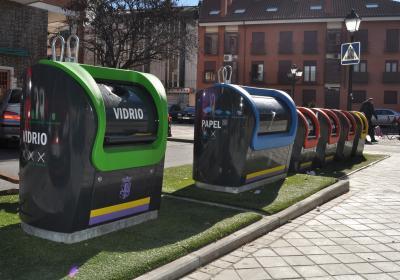Spanish legislation stipulates that at least 60% of waste paper and cardboard collected must be recycled, along with 60% of glass, 50% of metals and 22.5% of plastics. However, a study by researchers at the Jaume I (UJI) University in Castellón shows that this minimum requirement is only exceeded in the case of glass.
"Collection from sites for depositing paper and cardboard stands at 45% in the best of cases, at a maximum distance of 80 metres, while the average percentage for containers is 20%, meaning the target is not met either for plastics or metals", Antonio Gallardo, a professor at the UJI and co-author of the study, tells SINC. "This may possibly be due to the fact that recycling has been introduced more recently for containers than for glass".
The study, published in the journal Waste Management, was based on surveys carried out in Spanish towns with more than 50,000 inhabitants. The results show that each person generates 1.43 kg of waste per day, and that the distance to the collection point determines how much they separate of each material. Towns with the highest levels of waste separation are those where people can place their waste bins outside their houses, in other words only between 25 and 30 metres away.
Four collection models
Four collection models were identified, which varied between towns and autonomous regions. The most common model involves waste being separated into four sections – paper/ cardboard, glass, containers, and other waste. The bins for the first three are located at a collection point that is generally fairly far away (between 80 and 250 metres), while the rest of the waste is collected directly from the street outside people's houses.

Only collected glass is above the legal minimum required.
(Photo Credit: SINC)
The model with the greatest volume of containers collected – although it also entails a greater proportion of improper (incorrect) material – is the one with two bins on the street (for waste and containers), and a further two at the collection point (paper/ cardboard and glass). The third option is similar, but sees the containers bin substituted for an organic waste bin.
According to the study, the most efficient system is where waste is separated into five classifications – with two bins on the street outside the house for organic and inorganic waste, and the other three (paper/ cardboard, glass and containers) at the collection area. This is the method used in Catalonia, where people are legally obliged to separate organic waste.
"The high level of separation of waste at source, and the separate handling of each of these sections has led to a situation where city councils are not aware of the true make-up of their waste, and this was not the case a few years ago", says Antonio Gallardo.
The researchers are currently working on another recycling study in city council areas with between 5,000 and 50,000 inhabitants, which shows that up to eight different models are in use in small towns.
Source: FECYT - Spanish Foundation for Science and Technology